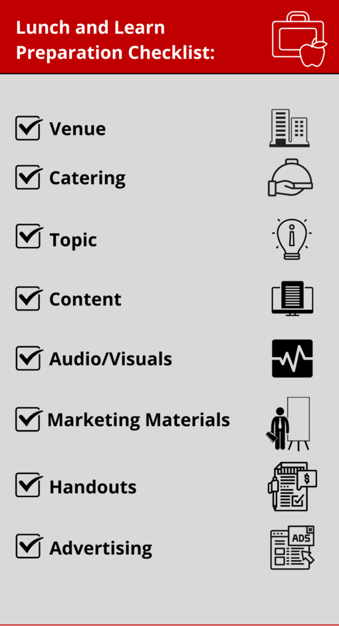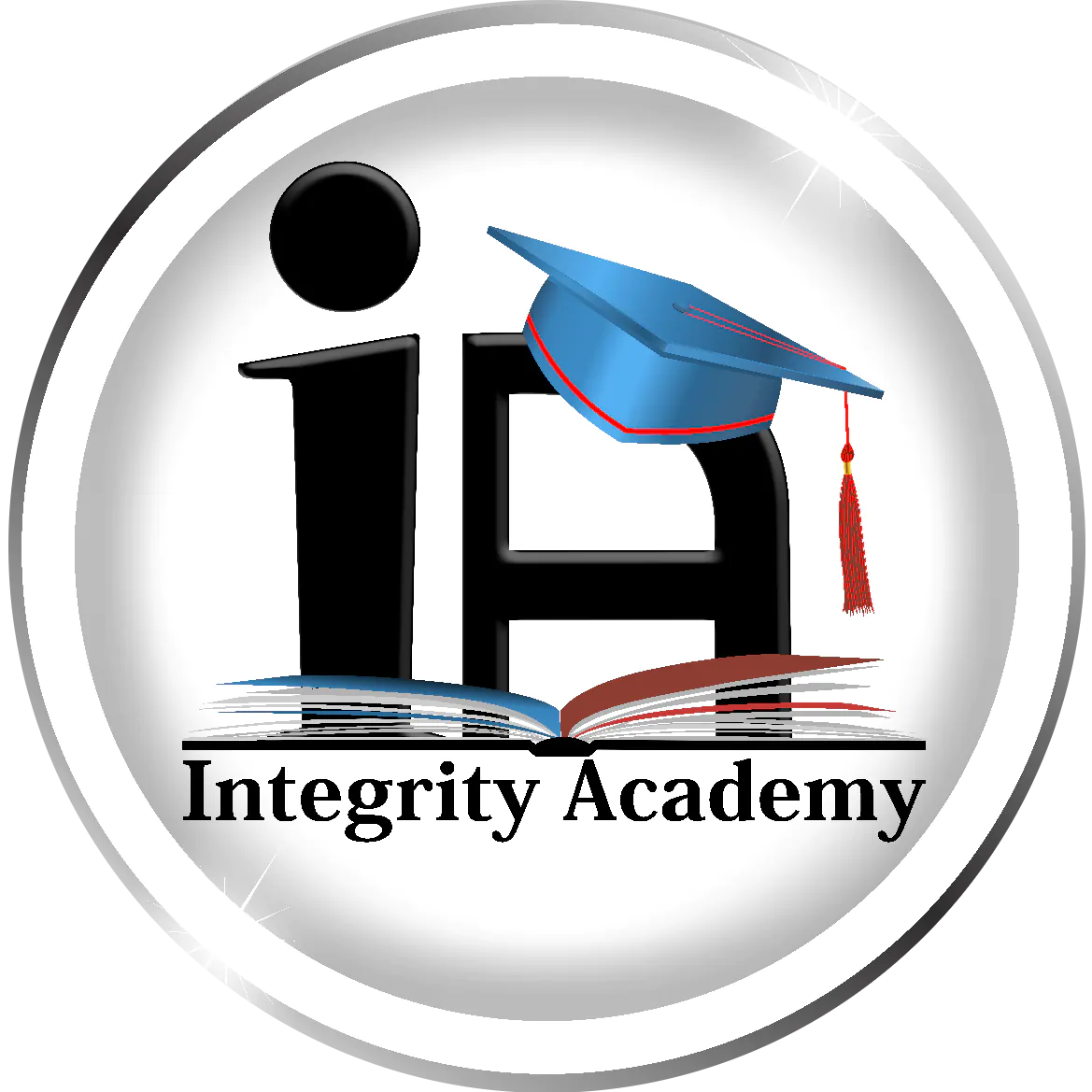Hosting a Lunch and Learn? Make sure you review our checklist
Are you looking to provide training opportunities to your team in the format of a lunch and learn?
A lunch and learn is an educational training session where a topic is discussed over a lunch hour. They are generally a voluntary, more informal event where employees can engage while learning something new to help them in their organisational roles.
Lunch and learn events can feel like a hard sell. If you ask your employees to take their lunch hour to listen to your training content, you want to make sure it feels worth their while. Lunch and learns should be engaging and enjoyable. And if done right, hosting a lunch and learn can improve employee satisfaction and the quality of employee training.
Lunch and Learn Preparation Checklist

Planning a lunch and learn is a significant responsibility, so preparation is key. It can be easy to worry that you may be forgetting something. To prevent any last-minute hiccups, below is our checklist for developing an effective lunch and learn:
- Venue: Consider where your lunch and learn will take place. Some ideas for this include the board room at the office, a restaurant, or a hotel conference room. If you are hosting an online lunch and learn, prepare your setup through a service like a Zoom or Microsoft Teams.
- Catering: It is not a lunch, and learn without the lunch! Make sure you make arrangements for catering your lunch and learn well in advance. If you are hosting an online lunch and learn, arranging the lunch part of that equation may seem complicated. But it doesn’t have to be. With countless online food delivery services, you can deliver food to your team’s locations or allow your employees to order food and reimburse them. While you can also opt to simply ask everyone to bring their own lunch to your lunch and learn, providing food may help you get more attendees and make your event more enjoyable.
- Topics Discussed: You must choose the right topic for your lunch and learn. Complex or formal instruction is probably not suitable. Choose a topic that can be covered in a short period. For example, email etiquette or a vendor presentation would be useful in a lunch and learn setting. Introducing a new method of production would probably not be effective for lunch and learns. Your lunch and learn topic should be focused and concise since you will only have about an hour to convey all of your content. When deciding on your topic, consider the priorities and challenges in your organisation and develop topic ideas that address them. Are you teaching more technical skills, such as the implementation of new software in your company? Or are you looking to increase your employees’ soft skills? These are the questions to ask when developing your topic. Since lunch and learn events are particularly brief, you want to ensure your topics are engaging and make sense for a more informal environment. It is why lunch and learns are best for training on manageable topics such as:
- Business etiquette
- Email etiquette
- Social media
- Managing change
- Team building
Any topics that are light, relevant, and engaging while also delivering information in a short-format presentation.
- Developing Content: Lunch and learns are more than social activities. They are used to convey critical information, so you cannot underestimate the importance of the content. The content that you use should be focused and relevant. It should also be informal and interactive to engage your audience better.
If you want to skip creating content from scratch, you can easily manoeuvre our one-day training materials to accommodate a brief lunch and learn. Our training materials cover over 170 different training topics, all with fully customisable content. It means you can take our course content and condense it to all the top points you want to teach in a one-hour time frame.
- Audio Visual Equipment: Consider how you will be delivering your content. If you plan on having visuals such as PowerPoint slides, ensure you plan how you will work out the technical components of your lunch and learn. Arrange to have your projector set up with your slides and if you need audio, arrange to have a mic set up before you present your content.
- Marketing Materials: Do you have marketing materials you want to be implemented into your lunch and learn? Perhaps you want to display your company banners or provide swag to your team. Be sure to have any marketing components for your lunch and learn prepared and set up ahead of time.
- Distribution of Materials: When presenting a lunch and learn (or any training for that matter), you need to consider the subject of takeaway material. What will you provide? What type of follow up will be necessary? Take away materials include handouts, quizzes, self-tests, websites, reference materials, and white papers. Your topic will determine what materials you need to provide. Always prepare your materials ahead of time.
Handouts are valuable tools that allow the participants to follow along with the presentation and take notes. Taking notes helps participants engage with the material on a personal level. However, it is essential to make sure that handouts are focused and not filled with too much information. Handouts are supplementary material. They should not provide all the information in your presentation, or people will read ahead and not pay attention. Consider the following for creating and distributing handouts:
- Basic points
- Room for notes
- Interesting graphics
When you create takeaway material, make sure to review it carefully. You do not want to send out the wrong information. Include your contact information in the handouts, and make more than enough copies for your class.
- Advertising: It’s not a practical lunch-and-learn if your turnout is underwhelming. Give everyone plenty of advances (about 2-3 weeks), so they can adjust their schedules and plan their tasks accordingly. Inform your team of your lunch and learn via email calendar requests (this allows you to get an easy RSVP), posters in common areas, and even word of mouth around the office. When advertising your lunch and learn, please focus on the impact and value of attending it, and don’t forget to mention any incentive for going (like a free meal).
Conclusion
We hope this checklist can help you effectively prepare for your next lunch and learn. Are you looking to train your team on putting on lunch and learn events? Contact Integrity Academy: 012-3481098 or
Posted by Katelyn Roy on September 16, 2021
